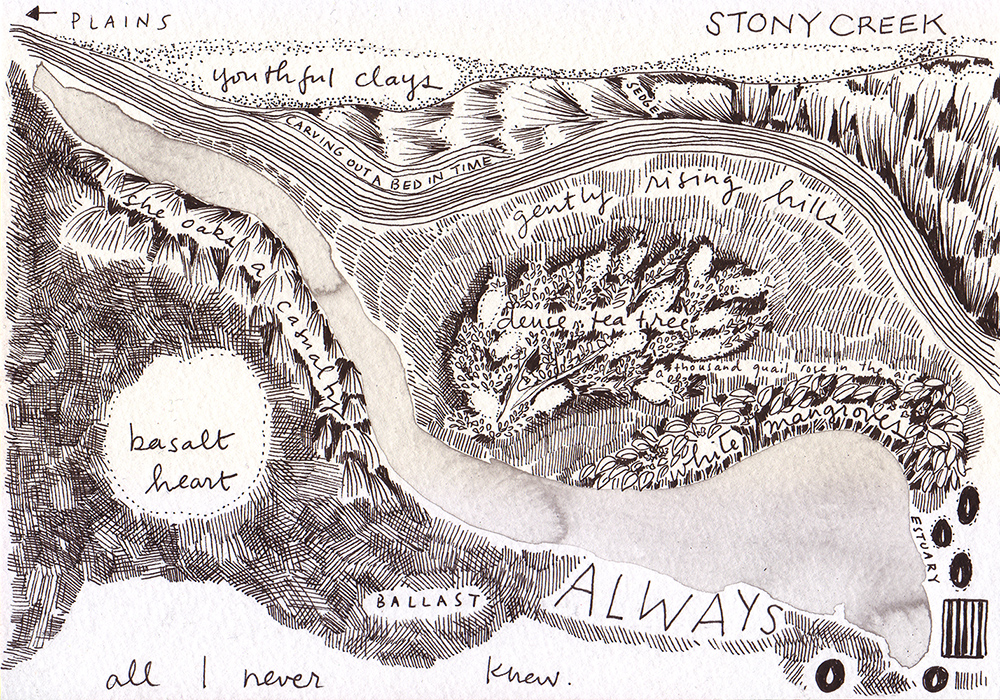
The Orbweavers | Stony Creek | ink and watercolour on paper | 2018
Numerous quarry holes riddle the ancient basalt ridges of Yarraville and Spotswood along Stony Creek – some sites were continuously worked from early settlement up until the 1950s. The quarries’ abundant bluestone filled empty ships heading back to the northern hemisphere as ballast. In the depths of my basalt obsession, I learned that Spotswood bluestone ballast paves the streets of London. The creek’s proximity to abattoirs on the Maribyrnong River also made it a convenient location for allied fellmonger and tannery operations, with swift drainage of foaming, acrid waste into a tidal estuary. Thanks to recovery work of community groups, the creek has been rehabilitated and mangroves have returned.
For this poem we use capitalisation again to designate the heightened importance colonial discourses give to human industry. In the third stanza we write:
Blast Chip Barge Ship
Each work has its own line and its own capital letter, and the words having only a single syllable make each line stressed. The regularity of this work is emphasised, as well as its destructive nature. Each line is stressed as the rock is blasted away, taken elsewhere, to where feet tread also in a regular rhythm.
The sections of the poem enclosed in brackets also operate like a refrain. The lines at the end of stanzas 4, 5 and 6 suggest a more intimate conversation with the reader as they appear to whisper ‘(like mine like mine)’ (line 16) or ‘(this way this way)’ (line 30). Each of these additions complicates the poem and questions who benefits from this quarrying of stone. Feet in London are compared to unshod feet with softer clays, however both can be seen to walk and sink into their materials, and the refrain ‘like mine’ brings this accountability back to the speaker of the poem – they also possess feet, which also walk on land, stone, soil, clay, silt. The refrain ‘this way’ further complicates this self-reflexive accountability because the phrase also implicates the reader. The reader is invited ‘this way this way,’ along paths that ‘untold lives’ (line 29) have passed through. Although these ‘untold lives’ are not specified, the reader is invited to join them, suggesting that many benefit from the quarried stone and are thus implicated in the processes that extracted it. The final refrain ‘(to this bay this bay home)’ (line 37) can suggest both water finding its way home, but also the unavoidable consequences of waterways manipulation.
The Orbweavers: Moonee Moonee Chain of Ponds
The Orbweavers: Saltworks
The Orbweavers: Stony Creek
The Orbweavers: The Lowlands (West Melbourne Swamp)
The Orbweavers: Walking West









